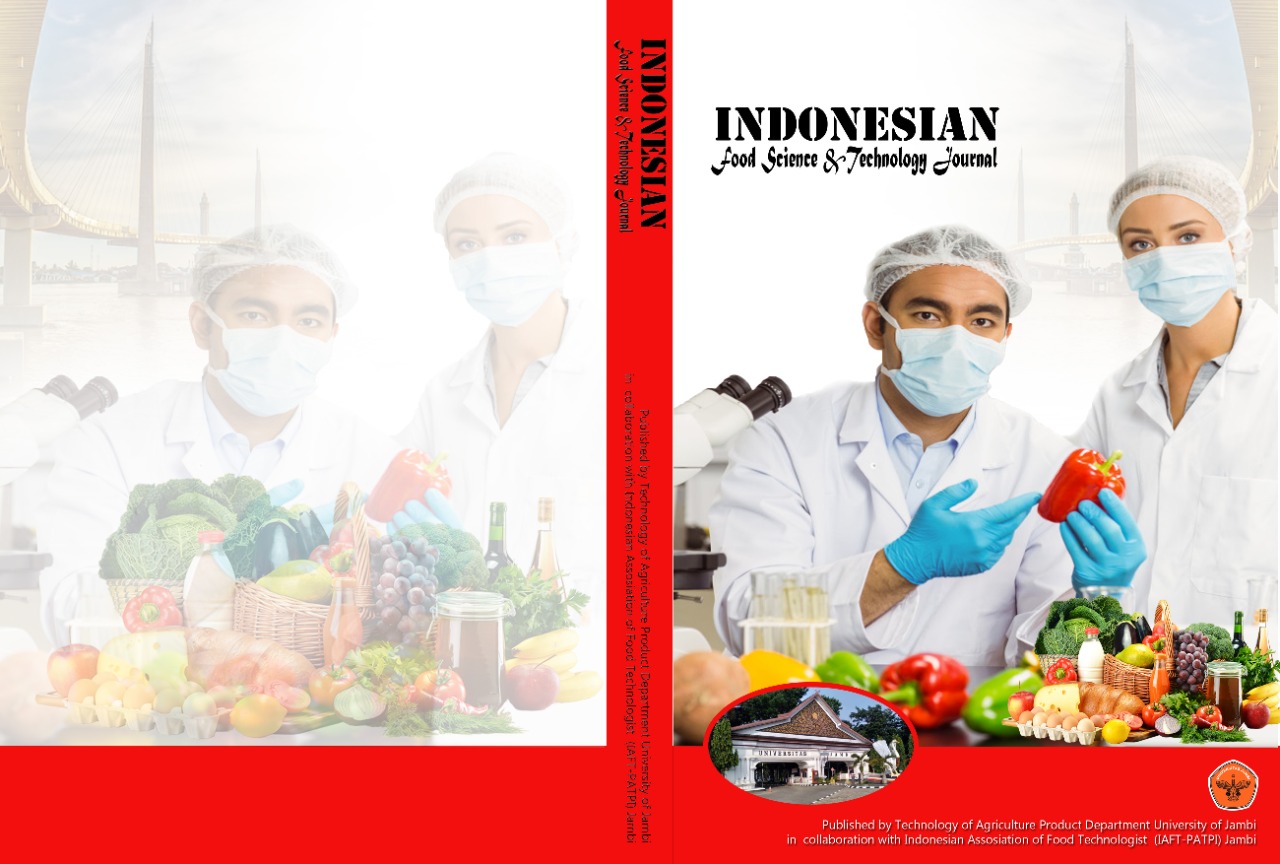Comparative Analysis of Custard Produced from Selected Cereals (Guinea Corn, Maize, Rice and Millet)
DOI:
https://doi.org/10.22437/ifstj.v4i2.12457Abstract
This study looked at the proximate and organolleptic qualities of custard powder produced from four different cereals (guinea corn, maize, rice and millet). Proximate result ranged between 9.95-14.05%, 1.20-2.78%, 1.10-2.31%, 4.75-5.50%, 7.96-12.88% and 66.49-70.58% for moisture, ash, crude fiber, fat, protein and carbohydrate content respectively. There was significant difference in all the parameters evaluated. Product from guinea corn and Millet compared favourably with the product produced from the conventional cereal (maize). Also, sensory result revealed the preference of consumers for guinea corn and Millet based custard to the conventional primary raw material. The study established the superiority of custard from guinea corn and millet to that produced from maize.
Keywords Custard, Maize, Guinea corn, Rice, Millet
Downloads
References
Association of Official Analytical Chemist (AOAC).. Analytical Methods, 2000.
B. Roy and A. B. Mandal. Anther culture in indica rice and variation in major agronomic characters in androclones of Karnal local. African J Biotechnology, 2016, 4(3): 235-240.
B. Roy, A. K. Basu, S. Das. In vitro response of aromatic farmers’ varieties of rice towards callus induction and plantlet regeneration. In: Role of Biotechnology in Food Security and Climate Change. Proceedings of 6thInternational Plant Tissue Culture & Biotechnology Conference, 2010, 3-5, Bangladesh Association of Plant Tissue Culture & Biotechnology, Dhaka, Bangladesh. 2011, pp. 59-66.
D. M. Kadam, D. V. K. Samuel, P. Chandra. and H. S. Sikarwar. Impact of processing treatments and packaging material on some properties of stored dehydrated cauliflower. International Journal of Food Science and Technology, 2008, 43:1-14.
F. S. Idachaba. Strategic and Policies for Food Security and Economic Development in Nigeria. Lagos: CBN, 2006.
G. J. Randhawa, S. Bhalla, V. C. Chalam, V. Tyagi, D. D. Verma, M. Hota. Document on biology of rice (Oryza sativa L.) in India. National Bureau of Plant Genetic Resources, New Delhi and Project coordinating and monitoring unit, Ministry of Environment and Forests, New Delhi. pp. 79. foods in Imo State, Nigeria. The case of meat and fish. Journal of Agricultural and Food Sciences, 2006, 1(2): 115-124.
G. Yuanjuan, D. Guomiao, H. Chungsu and N. Xiaofeng. Process optimization based on carrot powder color characteristics. Engineering in Agriculture, Environment and Food, 2015, 8(3):137-142.
J. I. Okoye, A. C. Nkwocha and A. O. Agbo. Nutrient Composition and Acceptability of Soy-Fortified Custard. Continental Journal of Food Science and Technology, 2008, 2: 37- 44. Birth Cohortâ€, Pediatrics DOI:10.1542/peds. 2012-2643.
M. O. Iwe. Sensory Method and Analysis. Published by Rojoint Communication Services (Ed.), Enugu, 2002, Pp. 49-72.
O. S. Fasasi. Proximate, antinutritional factors and functional properties of processed pearl millet (Pennisetumglaucum). Journal of Food Technology, 2009, 7(3): 92-97.
S. A. Peter. Poverty and Welfare in Nigeria. Abuja. 2008.
S. Carolyn. Investigation on the trypsin inhibitor, hemagglutinin, phytic and tannic acid contents of cowpea VignaUnguiculata. Food Chemistry, 2016, 12 (4); 249-254.
S. L. Lin, G. M. Leung, T. H. Lam and C. M. Schooling. “Timing of Solid food introduction and Obesity: Hong Kong’s “Children of 1997†2013.
T. J. Schober, M. Messerschmidt, S. R. Bean, S. H. Park, and E. K. Arendt. Gluten-free bread from sorghum: Quality differences among hybrids. Cereal Chemistry, 2005, 82: 394-404.
USAID. Promoting Food Security in Sub-Saharan Africa. The Journal Outlook on Agriculture, 2011, vol. 27.
Downloads
Published
How to Cite
Issue
Section
License
Copyright (c) 2021 Solomon Achimugu, Mrs Judith C. Okolo , Patricia E. Adaji

This work is licensed under a Creative Commons Attribution 4.0 International License.



